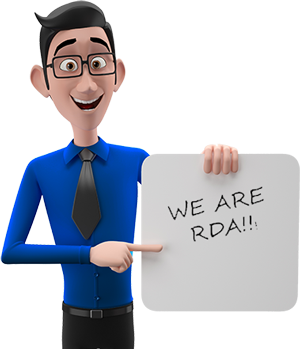HOA Insurance is a critical component in ensuring the stability and safety of community living. Navigating the complexities of homeownership often extends beyond the boundaries of individual properties to include shared responsibilities within neighborhoods. Homeowners’ Associations (HOAs) play a pivotal role in managing community resources, but their operations hinge significantly on adequate insurance coverage. Understanding HOA insurance is essential for safeguarding the community’s assets and ensuring smooth governance.
HOA insurance encompasses various types of coverage designed to protect against potential liabilities and damages faced by communal properties. From property insurance to directors and officers (D&O) insurance, each policy type addresses specific needs, making it crucial for HOAs to identify the right mix of coverage tailored to their unique circumstances. Moreover, local regulations and community requirements can further influence the appropriate insurance choices.
In this article, we will explore the essential elements of HOA insurance and guide you through the process of selecting the optimal policy for your community. By examining coverage types, assessing community-specific needs, and collaborating with insurance professionals, HOAs can secure comprehensive protection that aligns with their objectives and responsibilities.
Understand the Importance of HOA Insurance
Understanding the importance of HOA insurance is critical for any homeowners association (HOA) to protect its community from unforeseen financial risks. Events such as natural disasters, accidents, and legal disputes can create significant liabilities for the community. An adequate HOA insurance policy addresses these risks by covering property damage and liability expenses in common areas, ensuring that homeowners are not individually financially burdened.
When damage occurs in shared spaces, like community pools or parking lots, HOA insurance plays a vital role in providing the necessary funds for repairs, maintaining the community’s aesthetics, and functionality. This protection is integral to preserving the property values of the community.
Homeowners contribute to the HOA insurance through their dues, which safeguard common areas and help mitigate potential legal and medical expenses that might result from personal injuries within the HOA’s jurisdiction. It’s important for the HOA to carefully analyze insurance requirements and coverage limits to ensure that there are no gaps in protection. Effective negotiation can help minimize exclusions that limit coverage, maximizing the insurance benefits available to homeowners and the association as a whole.
Identify the Types of Coverage Available
Choosing the right insurance for your HOA is essential to ensure that your community and board members are protected from unforeseen financial liabilities. Understanding the various types of coverage available can aid in making informed decisions about the necessary insurance policies suitable for your association. Here we delve into key insurance coverages that should be considered by community managers and HOA boards.
Property Insurance
Property insurance is foundational for an HOA, covering damage or loss to common areas and structures, including community buildings, fences, and walkways. The core objective of this insurance is to protect against the high costs associated with repairing or rebuilding communal assets following unexpected events like fires or severe weather conditions. Comprehensive property insurance goes beyond the basics to include coverage for vandalism, theft, and other specific incidents, ensuring the HOA is not financially overburdened by the repair and maintenance of its assets.
General Liability Insurance
General liability insurance is crucial for legal protection, covering the HOA against claims related to injuries and accidents occurring in common areas. It accounts for legal defense costs, settlements, or judgments, providing a safety net against the significant expenses associated with lawsuits. Although not federally mandated, many local ordinances or lenders may require this coverage, and it certainly helps to reassure residents that the HOA is prepared for potential incidents.
Directors and Officers (D&O) Insurance
Directors and Officers (D&O) Insurance offers indispensable protection for HOA board members against personal liability claims stemming from decisions or actions they take in their official capacity. Board members are safeguarded against a range of claims, including failure to adhere to bylaws or allegations of discrimination. Particularly for volunteer board members, D&O insurance is an essential component of the HOA’s insurance strategy, mitigating potential legal challenges they may face.
Fidelity Bonds
Fidelity bonds provide defense against losses incurred due to fraudulent or dishonest acts by the HOA’s personnel or third-party contractors. For associations responsible for handling significant funds, fidelity bond insurance is critical, reimbursing the HOA for losses resulting from criminal activities such as theft or embezzlement. This coverage is recommended for any association that employs an individual or firm to manage its finances, ensuring a layer of protection for the HOA’s financial wellbeing.
By identifying and obtaining the appropriate mix of these insurance coverages, the HOA can secure comprehensive protection for its communal property, its board members, and the personal property of the homeowners, ensuring stability and peace of mind for the entire community.
Assess Your Community’s Specific Needs
Selecting the right insurance for your homeowners association (HOA) is a nuanced process that requires a thorough understanding of your community’s unique aspects and vulnerabilities. A one-size-fits-all approach is not advisable, as insurance needs can vary significantly among different HOAs, which can be influenced by factors such as community size, available amenities, and the services offered. The primary function of HOA insurance is to act as a defensive layer for association members against liabilities arising from unforeseen accidents, injuries, or damages that may occur within communal areas.
When determining the necessary insurance policies, it’s imperative to review the HOA’s governing documents. These documents will not only stipulate insurance requirements explicitly, but they will also set out the minimum coverage requisite for the association, which is a necessary legal step to ensure appropriate levels of protection. To navigate the complexities of insurance regulations and avoid potential coverage gaps, seeking the expertise of experienced insurance agents and legal counsel is invaluable. Such professionals can offer insights and guidance tailored to an HOA’s specific insurance needs, ensuring the community is well-covered and liabilities are adequately addressed.
Evaluate Local Regulations
Local regulations and statutory requirements can greatly influence the types and levels of insurance needed by an HOA. These laws can dictate the minimum insurance requirements for your association and differ markedly from one state to another. For instance, California mandates that associations with fewer than 100 separate interests maintain at least $2 million in commercial general liability coverage.
Understanding and adhering to these regulations is not only a legal imperative for the HOA, but also a preventative measure against potential legal challenges and financial liabilities. In some states, HOAs are required to carry a master policy that includes specific coverages. Confirming adherence to local laws regarding insurance levels can directly impact the necessary types, amounts, and coverage limits of policies that an HOA should maintain.
For HOAs, taking the time to scrutinize local regulations can safeguard against the repercussions of being underinsured, particularly for communal areas and amenities under the association’s purview. This examination must be meticulous, securing the HOA’s compliance with state laws and protecting against potential liabilities within the community.
Understand Community Requirements
Grasping the breadth of community requirements for insurance is integral to choosing the correct policies for your HOA. This comprehension starts with a detailed review of the governing documents. Typically, these documents provide a framework for the insurance obligations of the association, detailing the minimum coverage aspects needed and specifying which community assets must be insured.
An appropriate HOA insurance policy should tailor to the distinct requirements of the community, taking into account factors like size, resident amenities, and services provided. The overarching goal is to achieve extensive coverage that addresses all potential vulnerabilities. The master policy is a cornerstone of community management, commonly encompassing liability expenses, common area repairs, and property damage. All these elements combine to offer essential financial protection for the association.
Board members have a governance responsibility to be well-informed about indemnity provisions specific to their state, as some jurisdictions do not permit indemnification in instances of gross negligence. To fortify this protection, it is vital for community association managers to be named as additional insureds on the Directors and Officers (D&O) insurance policy. However, it’s essential to acknowledge that many D&O policies might exclude coverage for claims initiated by the association against the management company.
Determine Financial Responsibilities
Clarifying the financial obligations involved with insurance is essential for both the HOA and the individual homeowners it comprises. Homeowners bear responsibility for insuring their personal property and any elements of their unit not covered by the HOA’s master policy. Additionally, they must account for personal liability and manage deductibles for claims associated with their unit.
Although homeowners do not pay for the master insurance policy premiums directly, their HOA fees contribute to this cost indirectly. Therefore, it’s critical for both the HOA board and the homeowners to engage in regular reviews of the master policy’s coverage to ensure it mirrors the current needs and property values within the community.
Sufficiently funded reserve pots are also crucial in managing potential insurance shortfalls or deductibles; this approach alleviates the need for special assessments, which can be a financial burden for homeowners. Understanding precisely what the master policy covers is crucial in avoiding situations where individuals may find themselves underinsured.
Master Policies for Condominiums
When it comes to condominium complexes, a master HOA insurance policy typically covers the shared structures and common areas. This collective coverage is vital because it protects the aspects of the community that benefit all residents, like the building’s exterior, landscaping, and shared amenities.
The master policy comes in two main forms:
- Bare Walls-In: This type of policy generally covers the structure of the building, including walls, roofs, and floors, but it does not cover the fixtures and installations inside individual units.
- All-In: Contrastingly, an all-in policy often extends to fixtures within individual units such as built-in appliances and possibly other elements as stipulated by the HOA’s CC&Rs.
Condo owners are encouraged to purchase an HO6 insurance policy, which provides coverage for personal property, personal liability, and the interior parts of their condo that the master policy doesn’t cover. This is essential to safeguard their investments within their own units.
The specific extent of coverage for a condominium’s master policy can be found within the HOA’s governing documents, known as Covenants, Codes, and Restrictions (CC&Rs). It’s essential that condo owners understand what the master policy covers to ensure they obtain the right supplementary coverage, such as an HO6 policy, for their needs.
Coverage Gaps in Various Policies
Identifying and addressing coverage gaps is a critical risk management step for HOAs. Gaps often occur when the insurance on hand does not fully align with the community’s vulnerabilities or evolving risks. Notable gaps in coverage can expose the HOA to significant financial loss in the event of unforeseen incidents.
Things to consider include:
- Personal vs. Common Property: Personal insurance policies of residents cover their private property and specific parts of their unit, while the HOA’s master policy covers the common areas. It’s crucial to identify which structural parts of individual units are the HOA’s responsibility.
- Umbrella Policy: An umbrella policy can address gaps by offering additional coverage that goes beyond the limits of existing policies, providing another level of protection for the association against large liability claims.
- Insurance Requirements: A meticulous examination of the governing documents can uncover mandatory insurance requirements that, if unmet, may pose significant coverage gaps.
- Claims Process: Understanding and preparing for the claims process before an incident occurs can improve the efficiency of handling claims, thus preventing potential coverage shortcomings.
By paying careful attention to these factors, HOAs can work towards a cohesive insurance plan that closes the gaps and secures the community against a wide array of risks.
Collaborate with an Experienced Insurance Broker
When selecting the right insurance for your homeowners association (HOA), it is beneficial to collaborate with an experienced insurance broker. These professionals specialize in tailoring comprehensive policy options that cater to the specific needs of your community. They bring to the table the expertise necessary to navigate the intricate insurance requirements that pertain to HOAs, ensuring compliance with local regulations.
Working closely with an insurance broker can also lead to financial advantages. They have the capability to secure competitive prices while offering access to crucial coverage details that optimize the fit for your association. A broker’s role extends to the evaluation of coverage limits, key to providing adequate protection against liability expenses, personal injury claims, and property damage.
Additionally, an insurance broker will be an invaluable asset during your annual insurance review. This process is crucial for confirming that the HOA insurance policy remains aligned with any changes in community assets or legal requirements. Their insights can help mitigate risks related to personal property, medical expenses, special assessments, and compensation insurance.
In collaborating with a broker, you ensure that your HOA’s insurance portfolio is robust, relevant, and resilient, providing peace of mind for both the condo owners and the association board.
Given the concise passage requirement, a table or list was not included as it would be more suitable for a more detailed discussion of policy options or a comparison of different types of insurance.
Review Coverage Limits and Deductibles
When selecting insurance for your homeowners association (HOA), understanding coverage limits and deductibles is crucial. Coverage limits define the maximum amount an insurance company will pay for a covered loss, while deductibles are what the HOA must pay out of pocket before insurance kicks in. Typically, opting for higher coverage limits and lower deductibles results in a spike in premium costs.
Coverage Considerations:
- Regularly review coverage limits, especially during policy renewals.
- Ensure alignment with the master policy terms.
- Check for adequate coverage against potential loss assessments.
Risk Management:
- Implementing property maintenance and safety measures can lower premiums.
- Coverage limits and deductibles may be adjusted based on these efforts.
Insurance Needs Assessment:
- Factor in the size and condition of the HOA’s properties.
- Assess specific needs to determine appropriate coverage limits.
Discrepancies can arise if the insurer changes between an initial event and a loss assessment, thus confirming loss assessment coverage in both policies is essential. Remember to reassess your insurance requirements regularly and after any significant changes, ensuring your HOA is always adequately protected.
Stay Informed About Best Practices
Staying informed about best practices when selecting the right insurance for your homeowners association (HOA) is imperative to ensure comprehensive coverage for the community. HOAs must vigilantly assess the types of insurance required to safeguard against liabilities, such as accidents or damages in communal spaces. This includes being acutely aware of any policy exclusions and discussing potential modifications with insurers to maintain the community’s appeal and property values.
HOA managers and board members have the duty of prompt communication with insurance providers, ensuring immediate notification of losses and cooperation during the claims process; this facilitates an efficient resolution. It’s also essential to comprehend the scope of different coverage options available, such as:
- Fidelity Bond
- Workers Compensation
- Ordinance or Law Coverage
These policies are fundamental for robust protection of the association. Moreover, individual homeowners should be proactive in obtaining personal policies for insuring their private property and personal liability within their dwellings. The community association’s insurance typically does not cover these aspects, as it mainly extends to common areas and shared assets. Therefore, understanding and combining individual and HOA policies create a mesh of protection for the entire community.
Adjust Insurance Coverage Regularly
To ensure that your homeowners association is adequately protected, it is crucial to adjust insurance coverage regularly in response to various influencing factors. The premiums associated with your HOA insurance policy can fluctuate for several reasons:
- Environmental Shifts: Changes in weather patterns and natural disaster trends can enhance a home’s risk profile, making it more costly to insure.
- Claims History: A history of filed claims by the HOA can lead to higher premiums due to perceived increased risk.
- Policy Coverage Changes: Enhancements to the property that improve its value or add to liability exposure can also result in premium adjustments.
- Reinsurance Market Conditions: A tightening reinsurance market, often exacerbated by climate change-related disasters, can force insurers to raise premiums to cover higher underwriting costs.
- Industry Fraud: The unfortunate reality of fraudulent claims within the insurance industry means that companies must recoup losses, potentially resulting in higher premiums for honest customers.
Considering these factors, it is evident why regular reviews and adjustments of an HOA’s insurance coverage are necessary. Adjusting coverage encourages a proactive approach to risk management and helps ensure that premiums reflect the true cost of insuring the HOA’s property and liability exposures.
Responding to Changes in the Community
As communities evolve, so too should the insurance that protects them. An annual review of HOA insurance ensures that any new coverage needs are met, particularly following:
- Property Improvements: Additions to the community, whether a new gym or pool, can significantly alter the insurance needs of the HOA.
- Asset Inventory Changes: Keeping an up-to-date record of the association’s assets is key to ensuring proper coverage.
- Homeowner Responsibility: It is vital for homeowners to understand that the HOA policy has coverage limits and that insuring personal property is their responsibility.
Collaborating with a property management company that specializes in HOAs can lead to improved risk management, which may result in better rates and coverage options during insurance negotiations. Such partnerships can bolster the association’s ability to sustain the financial stability and integrity of common areas in the long run.
Addressing New Risks
With each passing year, an HOA may face new risks that its previous insurance coverage did not account for. Here are steps to address potential coverage gaps:
- Annual Insurance Review: Take time each year to review the existing insurance coverage in light of new amenities, shifting regulations, and property value changes.
- Asset Inventory Updates: By maintaining an updated inventory, the HOA can ensure that their property coverage keeps pace with the actual value of community assets.
- Hazard Reduction: Regular inspections of community areas help identify hazards, reducing potential liability and insurance claims.
- Professional Partnerships: Aligning with seasoned property management firms can be instrumental in negotiating better coverage and pricing, thereby enhancing the HOA’s overall risk profile.
These actions underscore the importance of staying vigilant and adaptable to new risks, ensuring the HOA is prepared to face unforeseen challenges with confidence.
Related Articles:
- HOA Reserve Fund: Assessing Full Funding vs. Underfunding
“Assess whether your HOA reserve fund is fully funded or underfunded.” - HOA Attorney: Selecting the Right Legal Partner for Your Community
“Guidelines for selecting the right legal partner to support your HOA’s legal needs.” - How to Allocate Surplus Funds Wisely in Your HOA








